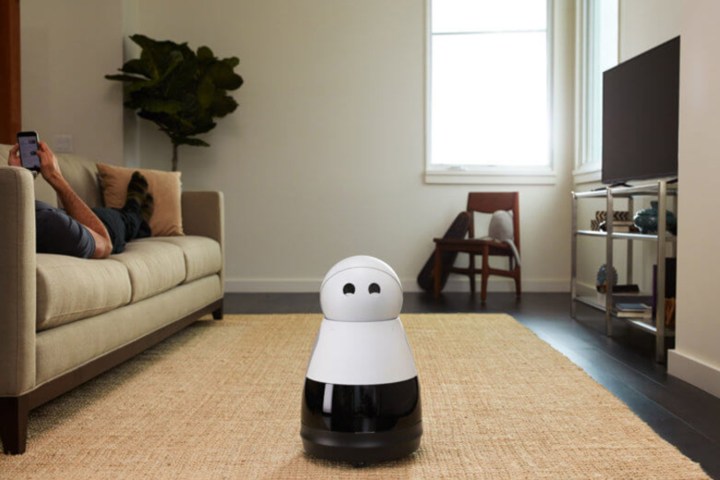
The world of robotic home companions suffered a setback this week when one of its potential stars walked out of the door.
Mayfield Robotics said on Wednesday that it’s ending work on its Kuri robot following three years of development.
The startup, which began with backing from German tech giant Bosch, said it felt “crushed” to announce the news of Kuri’s demise. But it said it had no choice after an extensive review concluded “there was not a business fit within Bosch to support and scale our business.”
For those not in the know, Kuri stood 20 inches high and was more of “an intelligent pet than a robot butler,” according to Mayfield. The cute-looking, wheel-based bot acted as an interactive and mobile videographer, capturing everyday moments around the home via its 1080p camera.
Kuri responded to voice commands and could navigate its way around autonomously. The owner could also control it remotely via a smartphone app if they wanted to check on their premises from afar. You could even talk through it, so if you saw your house being burgled, you could yell at the crooks to “get the hell out.” Similar to SoftBank’s Pepper robot, singing and dancing was also part of Kuri’s repertoire.
Mayfield said in a blog post on Wednesday that Kuri production will cease and that any that have been made will not be shipped. “All pre-order deposits will be refunded to our customers,” it confirmed in the post.
Kuri turned a lot of heads when it was first unveiled at CES 2017, impressing many with its mobility, awareness, and personality smarts.
“It doesn’t feel like a robot in the traditional sense,” Mayfield’s Chris Matthews told Digital Trends at the time. “It connects to people in a different way than normal tech. It’s very much about what people feel.”
Mayfield said its creation fulfilled its vision to create robots that are “joyful, useful, and inspiring,” but added that creating such a design had been a “massive undertaking.”
Its announcement comes just weeks after Honda announced it was ceasing development of Asimo, a talented robot that could run, hop, handle objects, and converse with humans. Honda said it would transfer Asimo’s technology to existing projects for single-person mobility vehicles and autonomous cars.
According to Mayfield’s statement, the Redwood City, California-based startup will live to see another day, as it’s opted to merely “pause operations” rather than end them entirely. That suggests it’s not yet done with the development of robotic technology, even if it’s curtains for Kuri.
Editors' Recommendations
- Amazing Atlas robot shows it’s almost ready for work
- Space station’s new robotic arm springs to life
- Watch Ford’s robot test drivers take a car for an on-the-spot spin
- Sony patents autonomous robot companion that talks to gamers, shares emotions
- Because 2020’s not crazy enough, a robot mouth is singing A.I. prayers in Paris


